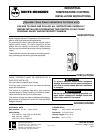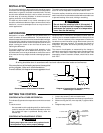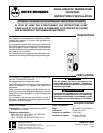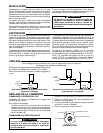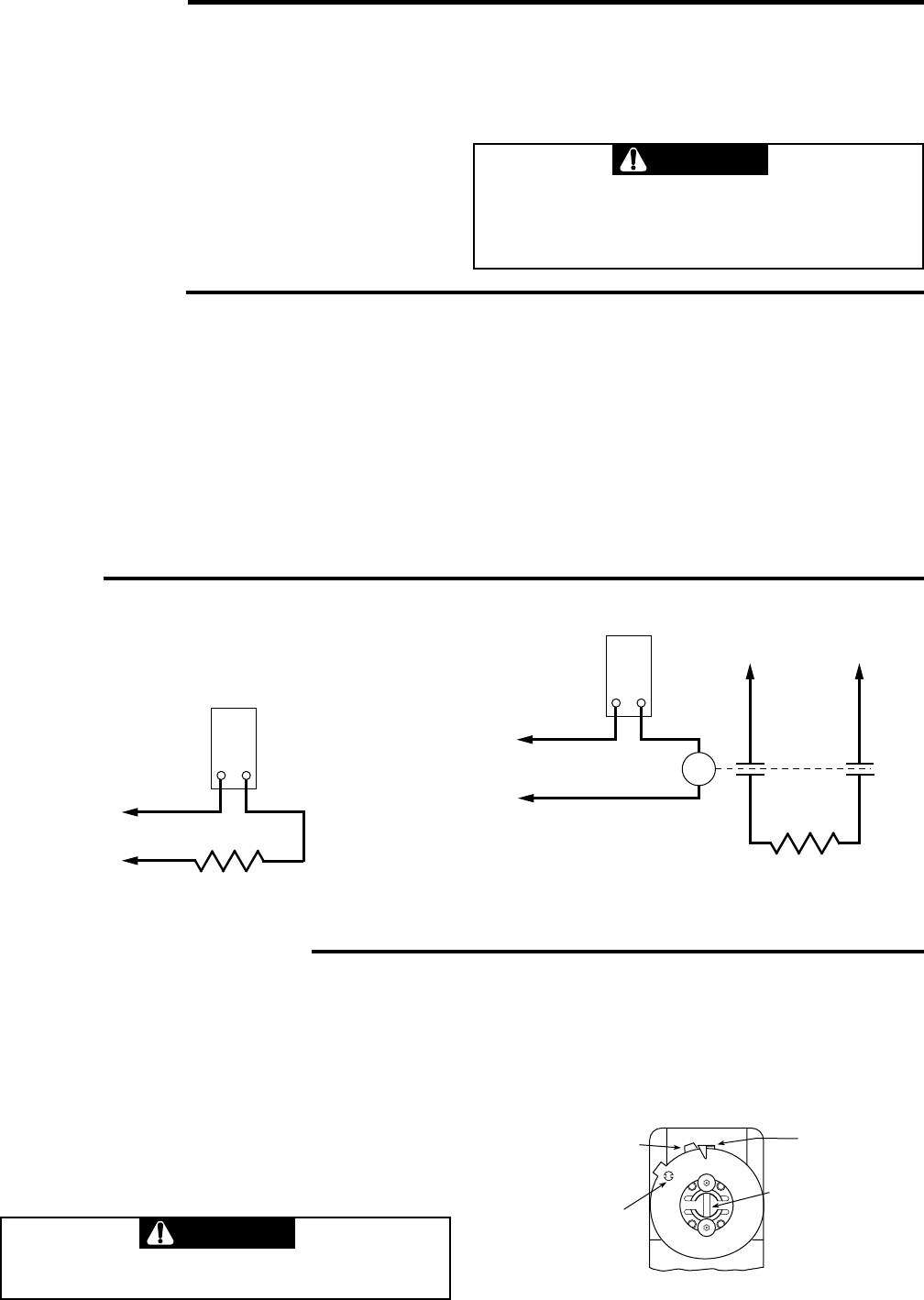
2
CONTROLS WITH A FIXED DIFFERENTIAL
The indicator (B) points to the temperature at which the contacts
open.
To set the control:
Use a screwdriver in the adjusting slot (A) on the front of the
control to rotate dial until the desired temperature at which
the contacts will open is positioned directly under the
indicator (B).
CONTROLS WITH ADJUSTABLE STOPS
Setting stop higher than control being replaced could
cause personal injury and/or property damage.
INSTALLATION
ANTICIPATION
Anticipation is a factor introduced into the performance of a
control to reduce its natural differential. The sensitive bulb of
industrial temperature controls can be located to obtain anticipa-
tion by placing it in a position close to the source of the heat. This
causes the sensitive bulb to receive heat quicker than the oven
proper, causing the control to turn the heat off sooner, thus
reducing the differential.
The proper location of the sensitive bulb depends on the
equipment design and can be determined only by trial. Care
should be taken so as not to put the bulb too close to the source
of the heat as this may subject the bulb to damaging tempera-
tures.
Equipment that is controlled by anticipated controls does not
reach its final or constant temperature on the first cycle of the
control. There is a tendency for the temperature to continue to
rise after the control first starts cycling. After several cycles, the
temperature becomes constant. The greater the amount of
anticipation, the greater the tendency toward preliminary up-
ward cycling.
The amount of anticipation as measured by the change in
calibration caused by the anticipated location should not exceed
25°. Thus, if the control is set to open the circuit at 300°F, the
temperature, when it becomes constant, should not be lower
than 275°F.
CAUTION
Do not dent the sensitive bulb of this control. A
dent or a sharp bend will change the calibration
and cause the control to cycle at a temperature
lower than the dial setting.
For all normal installations, the sensitive bulb should be located
so as to be in the average temperature of the controlled medium
where there is a good air circulation around the bulb. The bulb
should not be attached directly to a wall or surface, but should
be held away by mounting brackets. A minimum amount of
capillary should be in the controlled area.
The bulb may be mounted in any normal atmosphere, but it
should be remembered that the copper element should not be
installed in a corrosive atmosphere such as may be found in
certain applications.
The switch mechanism may be located in any position provided
that it will not be subjected to a temperature above 150°F.
Excessive capillary should be coiled and secured close to the
switch mechanism and should be handled with reasonable care
to prevent breaking of the seals, kinking or smashing.
WIRING
All wiring should be done in accordance with local and national electrical codes and ordinances.
If the manufacturer of the heating equipment has supplied
a wiring diagram, follow such recommendations.
If none is offered, this diagram shows a suggested circuit.
LOAD
N
LINE
HOT
LINE
N
COIL
L1
L2
HOT
LOAD
SETTING THE CONTROL
CAUTION
1. Loosen stop screw (E) with enclosed wrench.
2. Set dial to original equipment manufacturer's specification.
3. Without moving the dial, move stop tab (F) against indica-
tor.
4. Retighten stop screw (E).
“B” FIXED
INDICATOR
“A” ADJUSTING
SLOT
“E” STOP SCREW
“F” STOP TAB
FIXED DIFFERENTIAL
Connections for direct control of heaters.
Diagram of connections for operating heating
load through a contactor.



